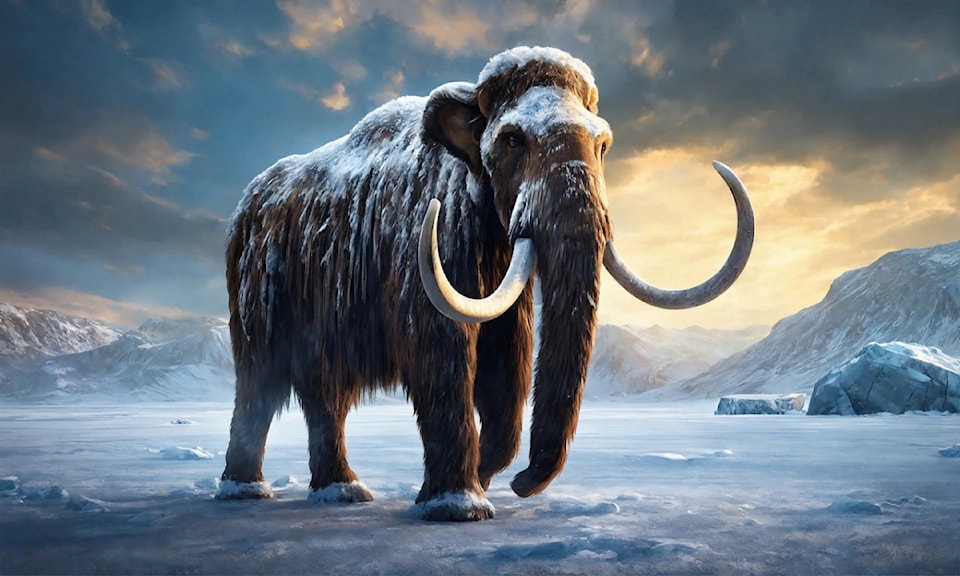A new study is exploring when mammoths roamed Vancouver Island.
The Simon Fraser University study has given scientists the clearest picture yet on when the massive prehistoric ice-age cousins of the modern-day elephant inhabited the island, as it has always been understood the mammals lived in parts of the province, but the question of when has remained... woolly.
As part of SFU researcher Laura Termesฯใฝถสำฦตึฑฒฅ PhD and published earlier this month in the Canadian Journal of Earth Sciences, the study examined 32 suspected mammoth samples collected on Vancouver Island. Of those samples, just 16 were deemed suitable for radiocarbon dating, an SFU release shares. The youngest sample was found to be around 23,000 years old and the oldest turned out to be beyond the range radiocarbon dating could measure, meaning it was older than 45,000 years.
Prior to the study, only two mammoth remains found on Vancouver Island had ever been dated. Both lived around 21,000 years ago, so the study provides a greater understanding of when the massive mammals lived in the area.
ฯใฝถสำฦตึฑฒฅThis is really exciting because it shows that mammoths have lived on Vancouver Island for a long time,ฯใฝถสำฦตึฑฒฅ said Termes, a PhD candidate in the Department of Archaeology. ฯใฝถสำฦตึฑฒฅWe were expecting similar results [to the two samples previously dated], but what we found were mammoths that were much older. It is fantastic that they could be preserved for that long.ฯใฝถสำฦตึฑฒฅ
Termes said having the curatorial support at the Royal BC Museum and the Courtenay and District Museum and Palaeontology Centre allowing access to their collections was invaluable to the study.
ฯใฝถสำฦตึฑฒฅThis research highlights the important role of museum collections for understanding how life has evolved and changed in British Columbiaฯใฝถสำฦตึฑฒฅs deep history,ฯใฝถสำฦตึฑฒฅ Victoria Arbour, curator of palentology at the Royal BC Museum said. ฯใฝถสำฦตึฑฒฅItฯใฝถสำฦตึฑฒฅs great to see Woollyฯใฝถสำฦตึฑฒฅs relatives in the Royal BC Museumฯใฝถสำฦตึฑฒฅs collections in the spotlight through this research study.ฯใฝถสำฦตึฑฒฅ
The UBC ADaPT Facility (which was instrumental in helping determine if samples were indeed mammoths and not whales or other animals) also played an important role in the research, Termes says.
Archaeologists need all the help they can get because while mammoths were enormous, finding intact samples in British Columbia is actually quite rare, she noted.
ฯใฝถสำฦตึฑฒฅWhen we imagine great big giant animals of the last ice age being found, we might have imagined fully articulated and complete skeletons being systematically excavated. But in southern B.C., that simply does not happen,ฯใฝถสำฦตึฑฒฅ says Termes. ฯใฝถสำฦตึฑฒฅInstead, we may get an isolated molar that's been tumbled around in the water for a long time, or maybe a piece of a tusk. And these are what everyday people are encountering.ฯใฝถสำฦตึฑฒฅ
For example, one sample she examined was a piece of mammoth tooth found by a child in the gravel at a local playground.
ฯใฝถสำฦตึฑฒฅSo maybe itฯใฝถสำฦตึฑฒฅs a dog owner, taking their puppy for a walk on a rainy day, or a gravel pit operator at work,ฯใฝถสำฦตึฑฒฅ says Termes, who grew up in Qualicum Beach. ฯใฝถสำฦตึฑฒฅI really like how these magnificent animals are finding their way into people's lives in routine and everyday ways.ฯใฝถสำฦตึฑฒฅ
The study is part of a larger look at megafauna in B.C., she said, and she also plans on radiocarbon dating mammoth samples from other parts of the province.



